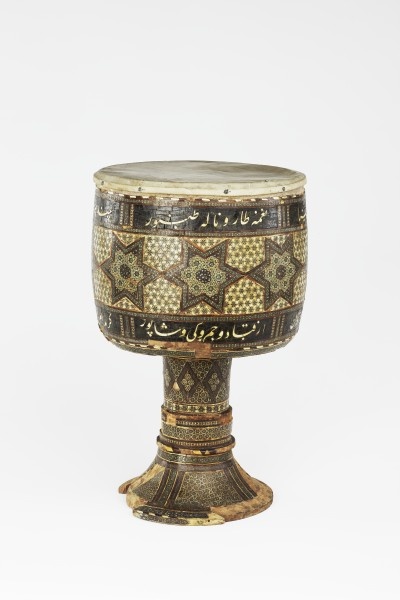Das nach seiner Form Bechertrommel (tombak) genannte Instrument ist das wichtigste Schlag- und Rhythmusinstrument der persischen Musik. Es wird sitzend gespielt und dabei auf dem Oberschenkel abgelegt, so dass beide Hände zum Einsatz kommen können. Die Inschrift dieser Trommel besteht aus Beineinlagen und ist in nasta’liq, einem fließend geschriebenen Schriftstil für Persisch, gestaltet. Sie plädiert für die Freude am Leben und den Genuss von Wein und Musik, um Gott zu ehren. Die Oberfläche wurde in der Mosaiktechnik hátem kárí gestaltet. (Text: Reingard Neumann)
Schenkung von Ph. Walter Schulz, Berlin, 1907. 1898 in Isfahan erworben.
en

